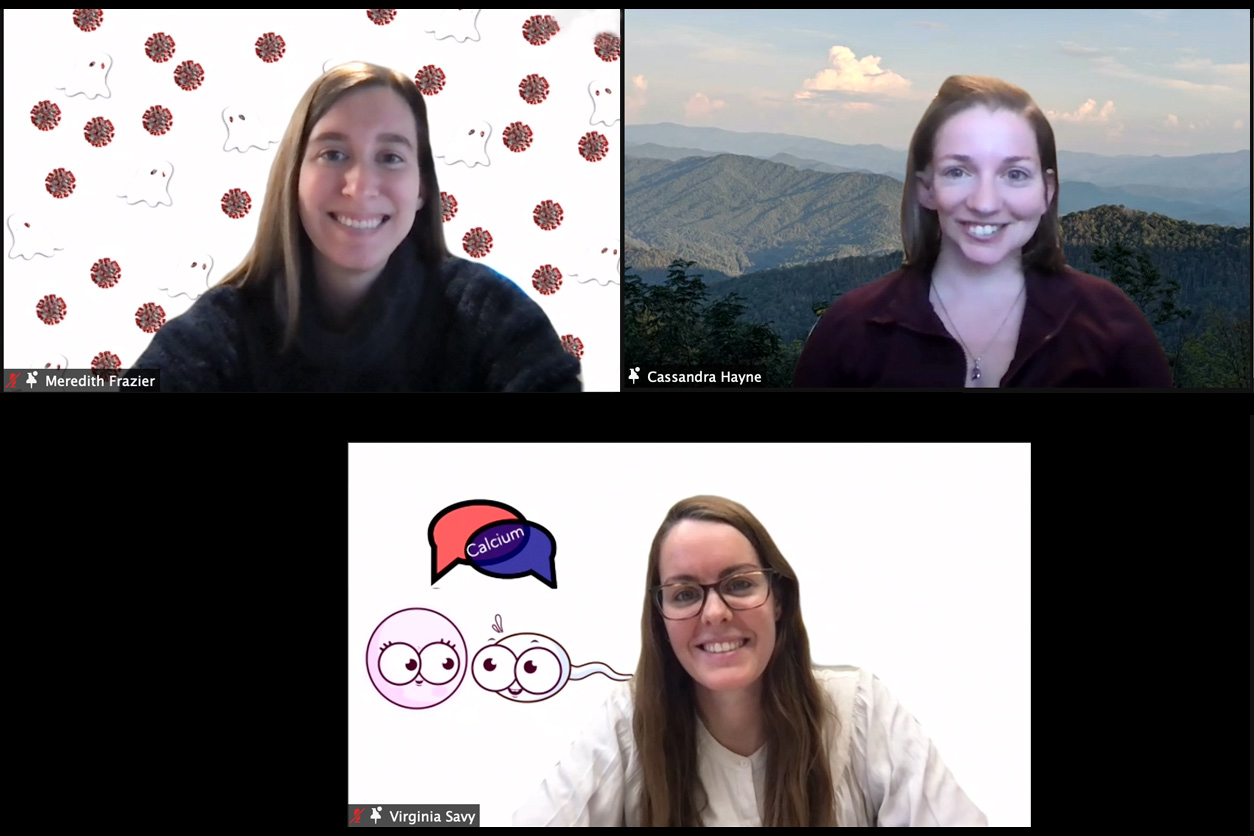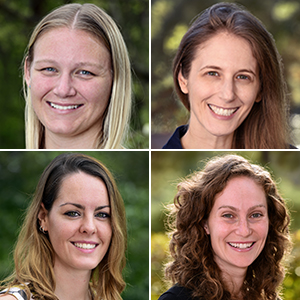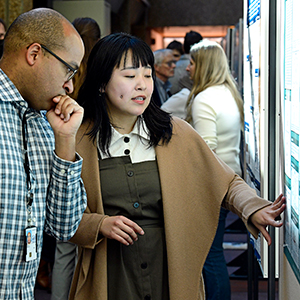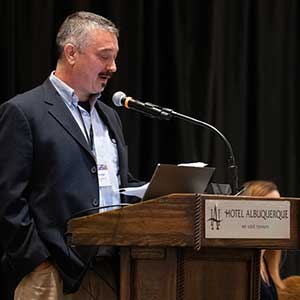Analogies abounded as 10 NIEHS fellows sought creative ways to explain their research in three minutes or less during the sixth annual Big Picture, Small Talk competition. The event, held online Feb. 18, is part of a larger NIEHS effort to help trainees hone the skills they need to convey the impact of their work to nonscientists.
Simply the best
The following scientists won $1500 each toward professional development.
- Meredith Frazier, Ph.D., Intramural Research Training Award (IRTA) postdoctoral fellow in the Signal Transduction Laboratory, mentored by Robin Stanley, Ph.D.
- Cassandra Hayne, Ph.D., IRTA postdoctoral fellow in the Signal Transduction Laboratory, mentored by Robin Stanley, Ph.D.
- Virginia Savy, Ph.D., visiting postdoctoral fellow in the Reproductive and Developmental Biology Laboratory, mentored by Carmen Williams, M.D., Ph.D.
“We feel that communicating your science to a broad audience is an absolutely essential skill to have,” said Tammy Collins, Ph.D., head of the institute’s Office of Fellow’s Career Development (OFCD), which sponsored the event.
 The winners, clockwise from top — Frazier, Hayne, and Savy — each chose fun backgrounds for their Zoom presentations. (Photo courtesy of Tammy Collins / NIEHS)
The winners, clockwise from top — Frazier, Hayne, and Savy — each chose fun backgrounds for their Zoom presentations. (Photo courtesy of Tammy Collins / NIEHS)Evoking the familiar
Frazier started the event strong by tying her work to the COVID-19 pandemic, which forced the popular competition to move online for the first time. “Today I’m going to tell you about a COVID-19 viral protein, and its search for you. Not you,” she said, pointing at the screen, “but the letter U, in the RNA code that makes up the virus.”
As she explained it, viruses and the immune system are in a kind of arms race, each trying to gain an advantage. “You can think of the protein I’m studying as an invisibility cloak, because it helps the virus hide from the immune system by cutting out that excess viral code.”
Frazier said that if scientists could remove the invisibility cloak, then they could weaken the virus’s ability to cause trouble, helping the immune system respond more effectively. As a result, a protein — called Nsp15 — could be a good therapeutic target for COVID-19.
The other competitors also relied on metaphors or familiar concepts to convey the complexity of their work. Hayne likened molecules called tRNA, or transfer RNA, to personal shoppers who select groceries for online orders — another pandemic reference.
In her presentation, Savy explained how the same calcium that is vital for healthy bones is also important for supporting egg fertilization and early development.
Crowd-sourced judging
Unlike previous years in which a panel of volunteer judges picked the winners, this year the more than 60 NIEHS staff and scientists in attendance voted for their favorite presentations. The judges were asked to consider the following elements of a successful presentation when making their choice:
- Did they clearly explain their research objectives?
- Did they explain how they conducted the research?
- Did they articulate the significance and impact of their research for a general audience?
- Was there an overall storyline that followed the logical progression of ideas?
- Was jargon appropriate for a nonspecialist audience and did it stimulate your interest?
- Did the presenter speak clearly and with enthusiasm, and did they explain what they gained from their NIEHS experience?
- Did the presenter keep a sufficient pace and finish on time?
For a few tense minutes at the end of the session, Nathan Mitchiner, the Lead Multimedia Broadcast Producer, tallied the votes before finally announcing the winners.
(Marla Broadfoot, Ph.D., is a contract writer for the NIEHS Office of Communications and Public Liaison.)









